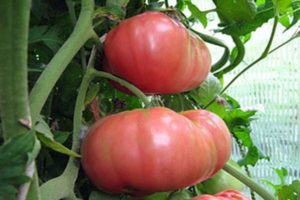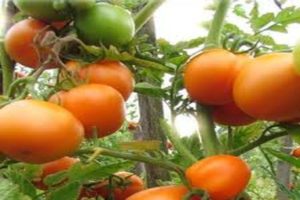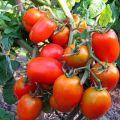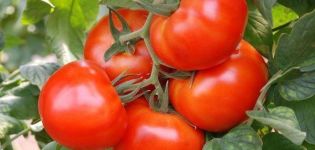Description and characteristics of the tomato variety San Marzano
In temperate latitudes, the San Marzano tomato is grown relatively recently, this was allowed by the hardening produced by the breeders. The popularity of the variety is due, first of all, to the excellent taste of the fruit and the property of the skin being easy to remove during cooking.
Variety properties
Tomatoes San Marzano (and other varieties - San Marzano 2 and San Marzano Nano) is a non-hybrid variety. Currently, hundreds of artificial hybrids have been bred. It is believed that they give a larger yield and better resist diseases and pests, but not all summer residents and gardeners prefer them.
The fact is that the fruits of non-hybrid natural varieties of tomatoes are much tastier, contain a much higher amount of vitamins and minerals... Varietal tomatoes have genetic resistance to unfavorable weather conditions, since generation after generation have been grown in a specific area. Tomatoes give full-fledged offspring, and even a novice gardener will have no difficulty in obtaining seeds on their own and sowing them next year.
Even at low temperatures, San Marzano tomatoes are able to produce fruit stably. In light of the ongoing climatic changes in nature, this characteristic of the variety is especially valuable. San Marzano is a medium early tomato variety. The first harvest can be obtained 110 - 115 days after sowing the seeds.
Being indeterminate, the plants have unlimited growth and are capable of reaching heights from 120 to 150 cm.
Description of fruits
An elongated plum-shaped tomato called "longo", large, dense and fleshy, collected in a cluster. The fruits are approximately the same in size. The weight of the fruit is about 120 grams, and the length is 12 cm. Ripe tomatoes have an intense red color, even and smooth, with a tender and juicy pulp containing a small amount of seeds.
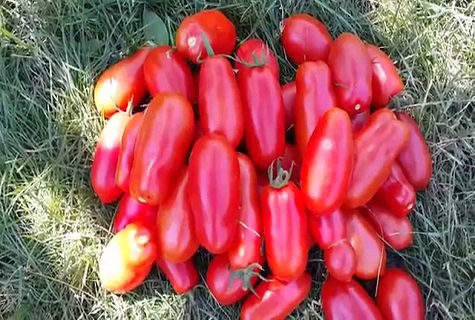
The fruits have an excellent sweet and sour taste. Perfect for fresh consumption, in salads and vegetable cuts. Good for seaming for the winter, especially for canning with whole fruits. Due to the ease of peeling, the skins are suitable for making tomato juice and pasta.
Tomatoes have a good keeping quality and transfer transportation over considerable distances without loss of marketability.
Agricultural Tips
Growing a San Marzano tomato is a fun process and not as easy as for hybrids. Plants are demanding to care for, but the effort spent will pay off with a plentiful and tasty harvest.

Forcing from seeds
Sowing seeds of this variety for seedlings, must be carried out at the end of March, dive in the phase of 1 - 2 true leaves.At the end of May, grown tomatoes should be transplanted into a greenhouse, under film shelters, or into open ground.
Transfer
For planting, it is necessary to prepare a place in advance, namely, to apply organic fertilizers in the fall so that they rot during the winter. In the spring, you need to additionally process the land with mineral fertilizers:
- potassium chloride
- double superphosphate,
- wood ash.

During the growing season, tomatoes need to be fed 4 more times.
Stepping out and leaving
A few weeks after planting in a permanent place, you need to cut off lateral and weak shoots from the tomatoes, leaving only 2 - 3 strong stems. In the future, they will form a bush. Grazing is carried out in order to achieve the highest yield.
The description of plant care includes 3 components. It is necessary to systematically water the bushes at the root, loosen the soil around the tomato and hilling the soil 2 - 3 times per season. Tomatoes reach 1.5 meters in height, and therefore, it is required to provide the bush with support and a garter in time.
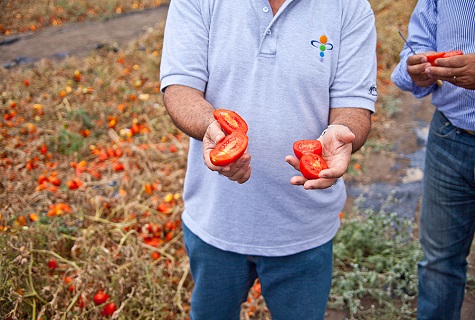
Harvesting
Already a couple of weeks after planting, flowering begins, and already in mid-July you can get the first tomatoes. Fruiting continues until autumn. The San Marzano variety is high-yielding. As evidenced by numerous reviews, the bushes are simply strewn with brushes with fruits.
Disease resistance
Representatives of this variety are quite disease-resistant, they can independently resist the manifestations of verticillosis and fusarium. In case of excessive air humidity, they are prone to top rot and late blight.

